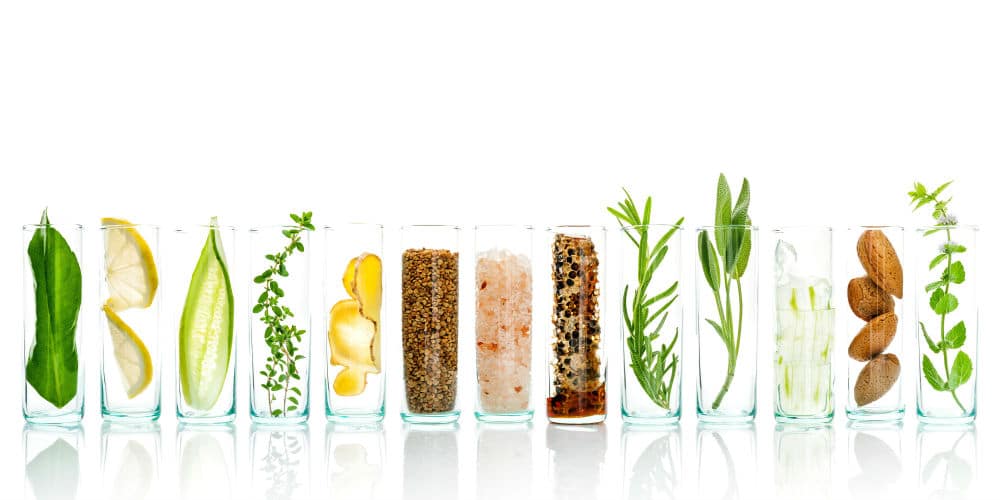Go sulfate-free. Use a Good Shampoo and Conditioner.
What's wrong with that $4 bottle of supermarket shampoo? Although economical, it's most likely packed with harsh chemicals known as sulfates, which show up on ingredient labels as "sodium lauryl sulfate," "sodium laureth sulfate," and "sodium lauryl esther sulfate." While these detergents help make products sudsy, they also deprive your hair of its healthy oil, leaving it dry, brittle, and difficult to manage. To avoid these effects, look for a low-sulfate or sulfate-free shampoo, which cleans without removing oil. A good shampoo and conditioner will help cleanse the hair, add moisture and elasticity, and smooth the cuticle to add shine.
Shampoo less often.
Washing daily with any shampoo, even with the low-sulfate kind, will strip some oil and dry your hair and scalp. What's more, most styling products like gel and hairspray are water-soluble, so they don't need shampoo to rinse out of hair.
Cool Off
Nothing feels better than a piping hot shower, but it's wreaking havoc on your hair and scalp. Very hot water strips too much of the essential oil from the hair and scalp and leads to dryness.
Treat Wet Hair with Special Care
Hair's main component is a protein called keratin. Water stretches and weakens keratin molecules, so hair is more fragile when wet.
Unfortunately, this is just when hair gets its roughest treatment: washing, drying and the application of all kinds of "care" products.
To minimize damage, wash hair only as needed. If you have naturally oily hair, that may be daily, but most guys can go longer. Over-washing can actually dull hair by stripping away protective oils.
Make your routine as gentle as possible. Use warm water, not hot water. Massage the scalp rather than scrubbing, and blot hair dry with a towel instead of firing up the blow dryer. Ease out tangles with a wide-toothed comb.
Use the Right Tools
Don't use a brush on wet hair, when the hair is most vulnerable. When combing through wet hair, use a wide-toothed comb and gently work out any tangles. Avoid heated tools such as blow dryers or irons which can dry and damage hair. For those who prefer a brush, go with a wide-tooth brush
Maintain a Healthy Scalp
Hair starts from the scalp, so for hair that's sleek, strong, and shiny, make sure you take good care of your scalp. Scalp massage is beneficial because it helps promote good blood flow to the scalp, helps to keep the scalp flexible, soothes nerves and relaxes. Scalp massage also promotes hair growth and luster. It feels great, too. One each week, massage the scalp with the fingertips using a firm pressure in a circular motion. Place the fingers under the hair to avoid pulling. Perform this exercise for three or four minutes.
Watch the Greasy Stuff
From slick to spiky, gels and other styling aids create looks that your hair left alone would never accomplish. Gels work their architectural feats using polymers -- that is, plastic -- dissolved in alcohol. Alcohol can weaken keratin and strip hair of moisture and oils. That damages keratin, leaving hair weak and brittle. Use gels sparingly, preferably those that are alcohol free.
Pomades and waxes, on the other hand, contain heavier ingredients like petroleum jelly and beeswax. Removing them may take repeated washings or a stronger shampoo than you would otherwise use, which can also damage hair. Water-based formulas help avoid this problem. But remember: A little goes a long way.
Reduce Frizz
Low moisture and protein in the hair can cause frizz. To minimize this problem, use a good moisturizing conditioner. A slick, smoothing serum can be applied to add shine and give the hair a smoother appearance.
Avoid Tight Hats
A tight hat (or ponytail) can cause "traction alopecia", a condition in which hair is pulled out of the scalp. If worn long enough, the damage can become permanent. A tight hat or ponytail can also cause damage to the cuticle and breakage.
Keep it Trimmed
Since the only real way to remove damaged hair is to cut off the damaged section, keeping your hair trimmed regularly will help eliminate split ends. Even if you're growing your hair out, make sure to get it trimmed about every six weeks, but make it clear to your barber or stylist that you only want enough hair removed to eliminate the damage.
Avoid Chemical Treatments
Repeatedly coloring or perming hair can leave it damaged, dry, and dull. I recommend avoiding at-home chemical products and seek a good stylist for such services. A stylist will know how to properly prepare you hair and choose the best products for your hair type. Results from a trained professional will almost always look more natural than those which can be produced at home.
Eat Right and Exercise
Eating a healthy diet is the only way to truly nourish hair. Substances applied from the outside can only improve appearance and texture.
Hair needs the same spectrum of nutrients as the rest of the body, and some are especially beneficial. For example, hair is largely protein. Meat and dairy foods pack the most protein punch, with soy foods running a close second. Biotin, a B vitamin, promotes softness and strength. It's found in brown rice, leafy greens and eggs. The omega-3 fatty acids in fish and nuts are especially good for the scalp. Getting enough fluid in both food and drink is also essential to handsome hair.
And exercise? It increases the blood flow, delivering all those nutrients to your scalp -- which, you'll remember, is where healthy hair starts.








